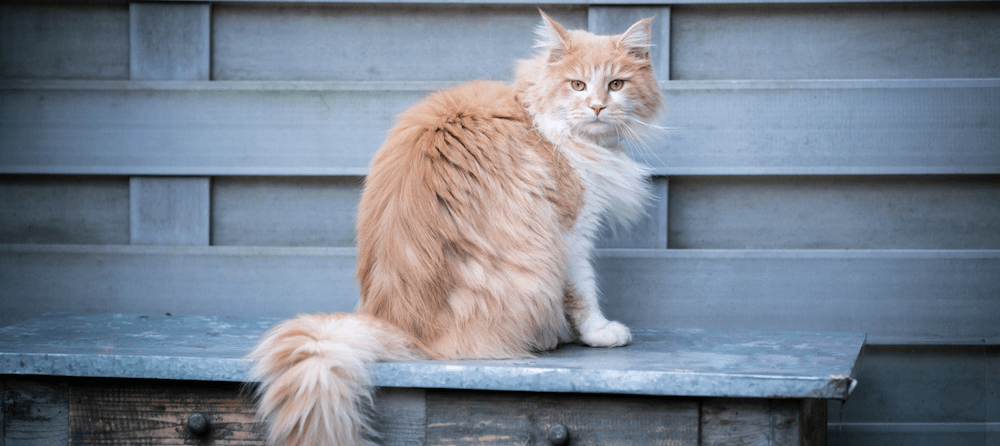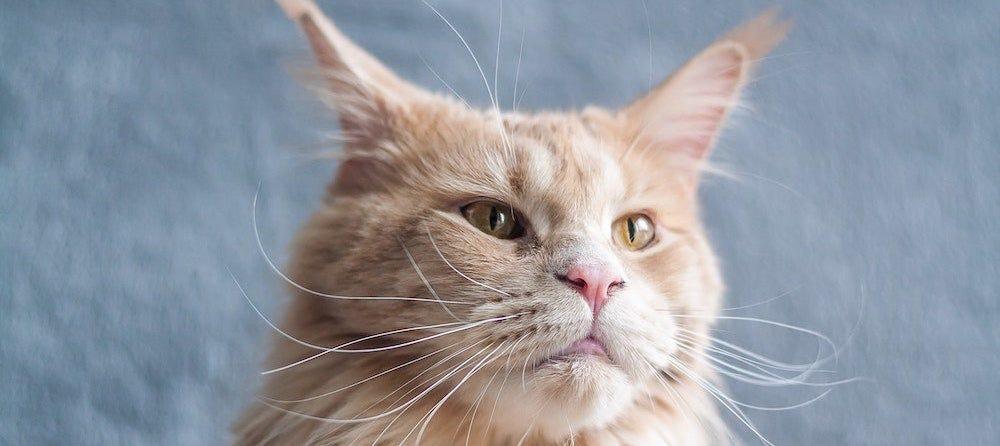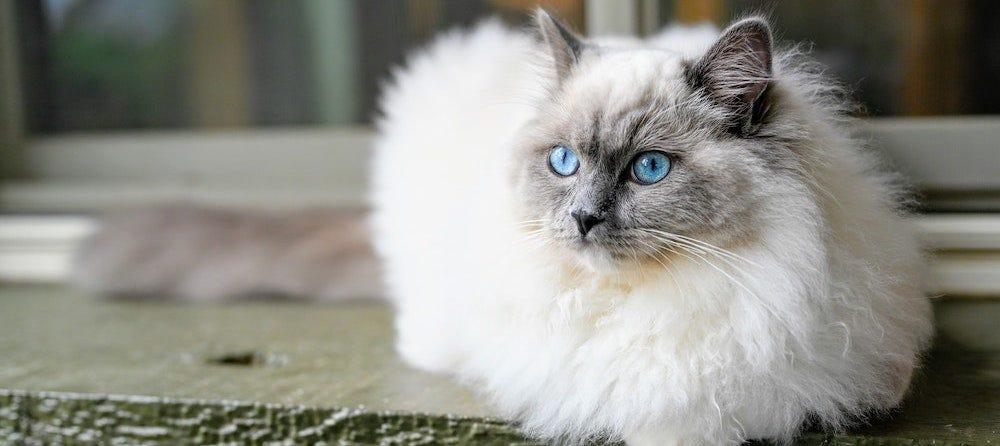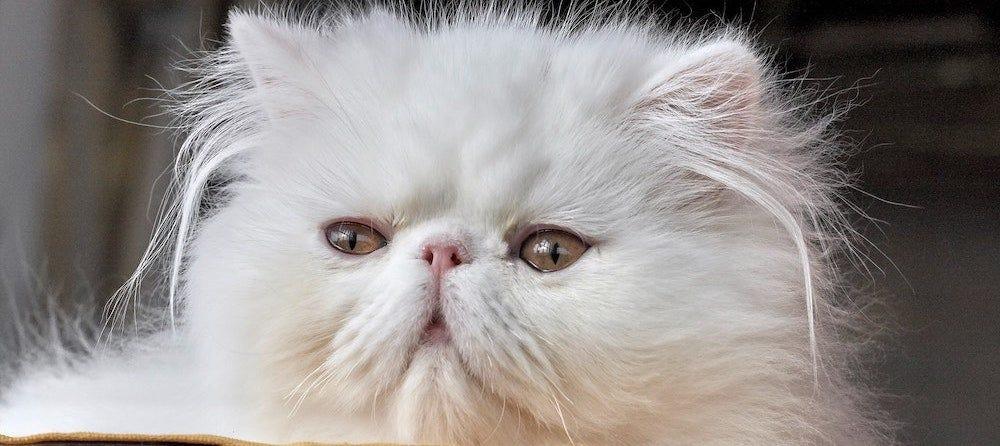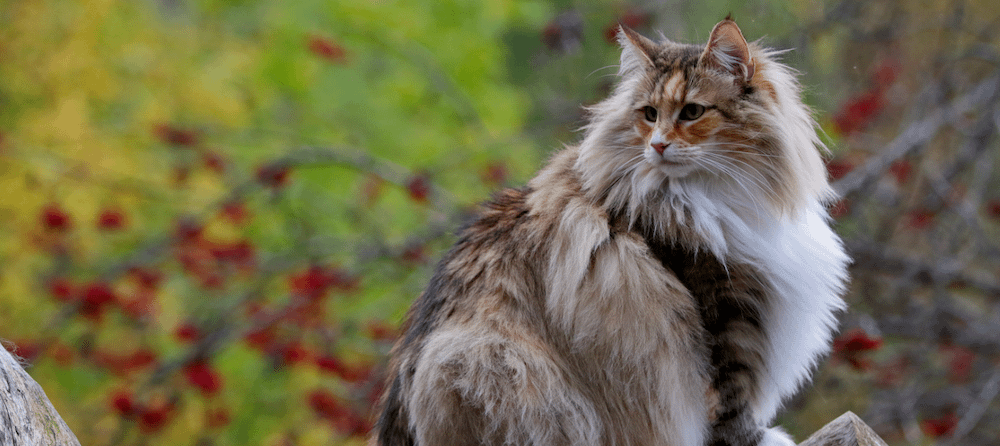Updated April 4, 2024
There’s nothing quite so majestic and sophisticated as the long-haired feline. In this post, we pay tribute to the bushy beauty (not to mention hard-earned grooming) of 14 long-haired cat breeds.
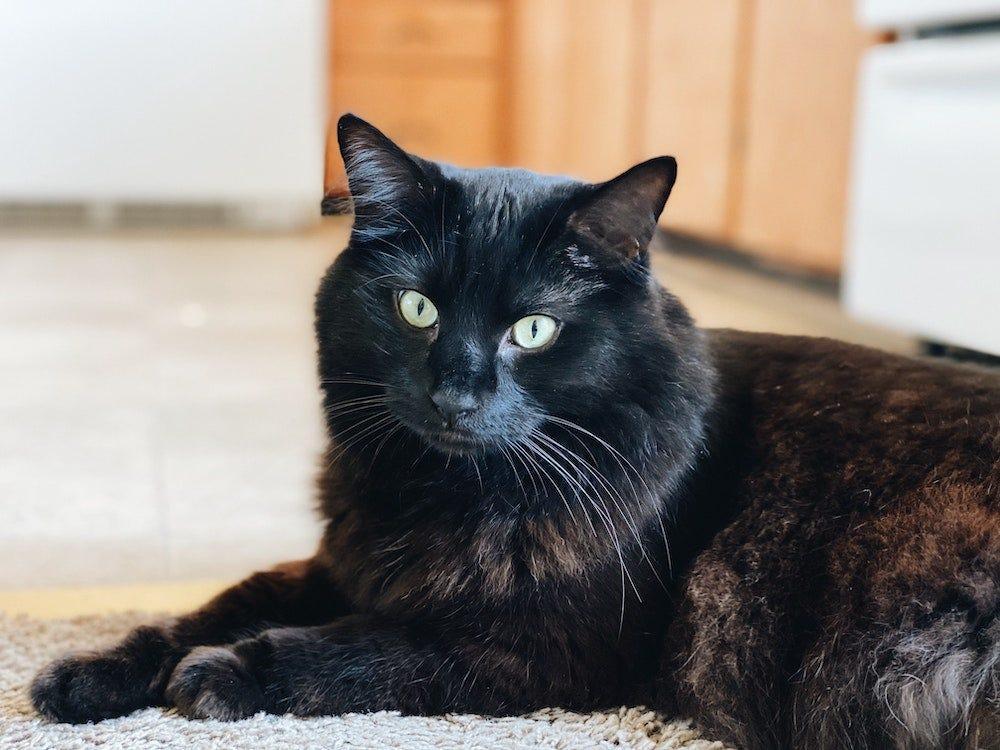
Facts about long-haired cats
Long-haired cats—including man-made and hybrid cat breeds—are not as prevalent as short-haired cats. This is because the gene for long hair is recessive.
Approximately 1 in 10 domestic cats in the U.S. is a Domestic Longhair, or a long-haired cat of mixed ancestry that doesn’t belong to any specific recognized cat breed.
Where did long-haired cats originate?
It’s speculated that long-haired cats arose out of cat populations in the northern reaches of Russia, Iran, and Turkey. The gene for long hair was naturally selected among these cats as a way of surviving the harsh, cold climates in tundras and mountainous regions.
Pros and cons of long-haired cats
When you think of luxury and feline elegance, long-haired cats undoubtedly come to mind. With their lavish coats and regal attitudes, they are a joy to behold. But like anything in life, owning a long-haired cat has its own set of pros and cons.
Pros
- Elegance and beauty: Long-haired cats are the epitome of feline elegance. Their luxurious coats and regal attitudes make them visually striking, adding a touch of opulence to your home.
- Comforting texture: The coats of long-haired cats are incredibly soft to the touch, providing a comforting and therapeutic experience for pet parents.
- Friendly dispositions: Many long-haired breeds, especially Maine Coons, Ragdolls, Birmans, and Ragamuffins, are known for their friendly and gentle dispositions, making them wonderful companions.
- Wide variety: There's a wealth of long-haired breeds to choose from, each with their unique looks and personality traits.
Cons
- High maintenance: Their lavish coats require more grooming and care than their short-haired counterparts. Regular brushing is necessary to prevent matting and tangling of their fur.
- Shedding: Long-haired cats tend to shed more, which can lead to more frequent cleaning of both your home and their litter box. This also means you might have to deal with more fur on your furniture and clothes.
- Health considerations: Purebred long-haired cats can be more susceptible to certain genetic health conditions than other cats. Regular vet check-ups and health monitoring are crucial for catching issues before they can become serious.
- Prone to hairballs: These cats are more prone to developing hairballs due to their long fur, which can lead to health issues if not managed properly.
Maine Coon
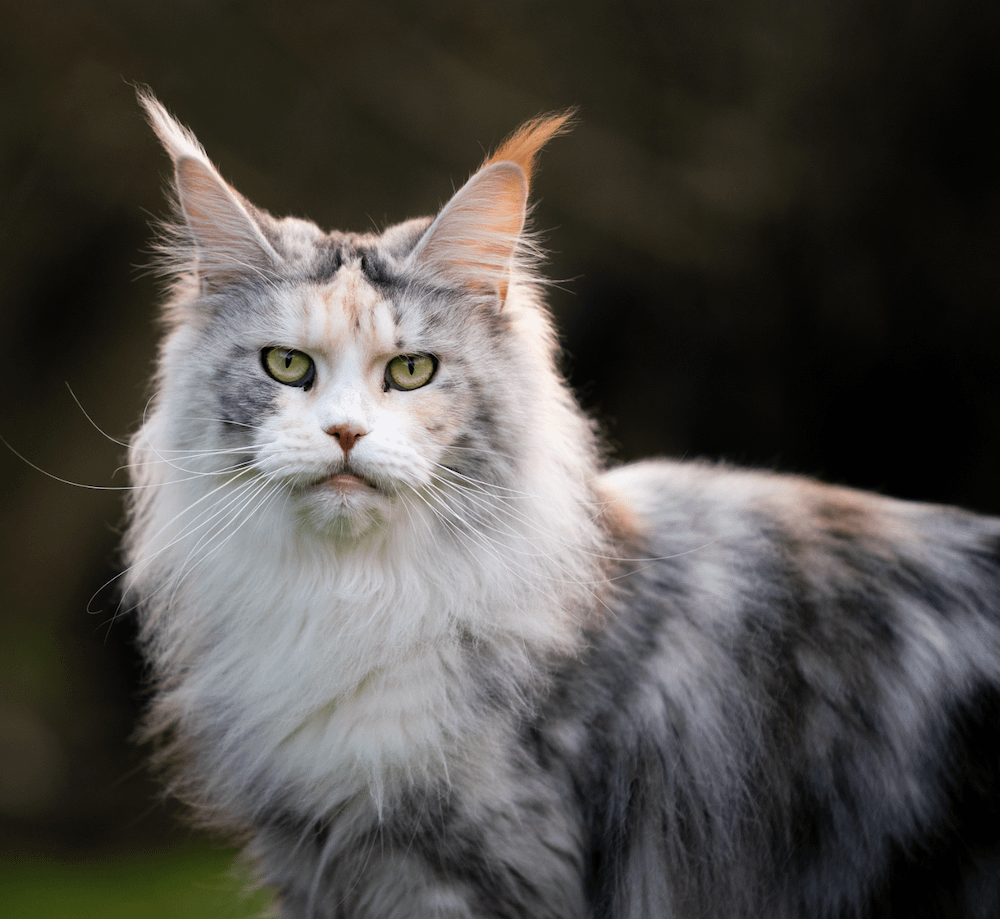
The Maine Coon—one of the largest cat breeds—calls to mind a good-natured, all-American mouser. Their tendency to be polydactyl (have extra toes) makes them excellent hunters and climbers. They are the state cat of Maine, and were a popular competitor at early cat shows in Boston and New York.
The Maine Coon’s protective coat is long, shaggy, and water-resistant. Although their long fur is thick and heavy, matting is minimal with a regular combing session. While many Maine Coon cats are brown tabbies, the coloring and patterns of their coats range widely, including solid, tortoiseshell, bicolor, and more.
Ragdoll
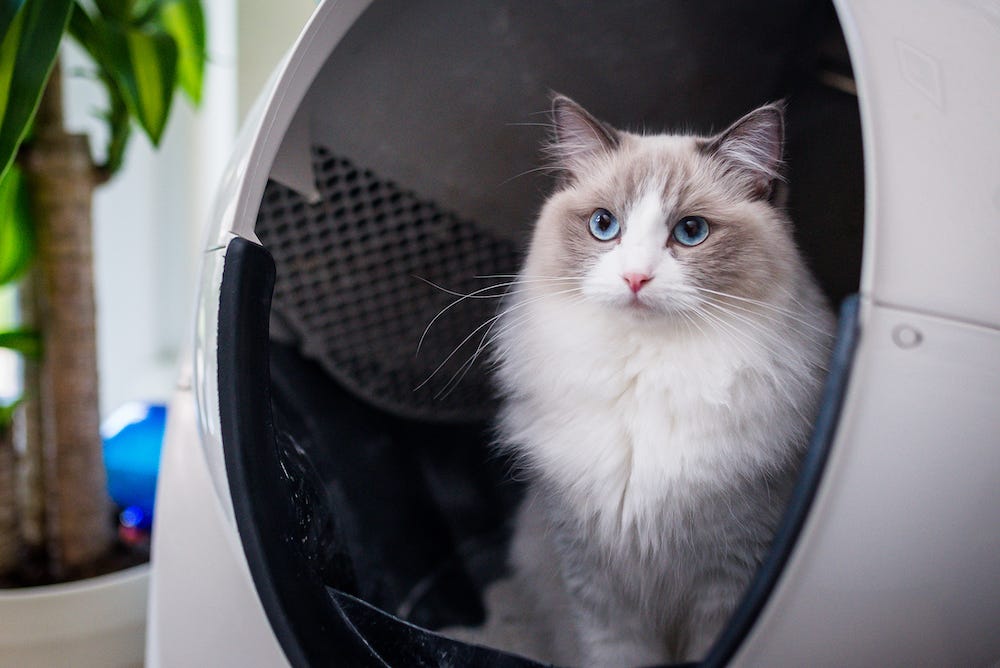
The Ragdoll cat’s plush, silky coat requires little routine grooming. These gentle giants take four years to reach maturity, and are known to fall limp in the arms of anyone who holds them. In the 1960s, breeder Ann Baker used free-roaming cats she found in her California neighborhood to develop this gentle, placid breed.
These long-haired cats are most recognized for their colorpoint coats, including these 5 variations for coat patterns: colorpoint, mitted, bicolor, lynx point, and tortie point. Although the Ragdoll’s fur is long, the undercoat is sparse, which means it mats less than other long-haired breeds.
Persian

Of all the long-haired cat breeds, the Persian cat may be the first one that comes to mind. This very old breed is thought to have originated from Turkish Angora cats crossed with other long-haired breeds from Asia.
Sweet, gentle, and quiet Persians are famous for their silky white coats, though they now come in a variety of other colors. In terms of grooming, this is a high-maintenance breed: The long, luscious fur that probably drew you in will require daily grooming to ensure it doesn’t become matted or tangled, as well as monthly baths.
Norwegian Forest cat

The Norwegian Forest cat’s large, muscular body and dense, water-resistant fur coat helped them survive many generations in the harsh climate of Scandinavia. Legends surround the official cat of Norway, including those that say they traveled on Viking ships and pulled Norse goddess Freya’s chariot.
These friendly, adaptable, and laid-back cats have a double coat: the undercoat is thick and dense, and the topcoat is glossy and water-resistant. The coats of Norwegian Forest cats require constant grooming to maintain. They can have a variety of coat colors and patterns, the most common being tabby and white.
Siberian
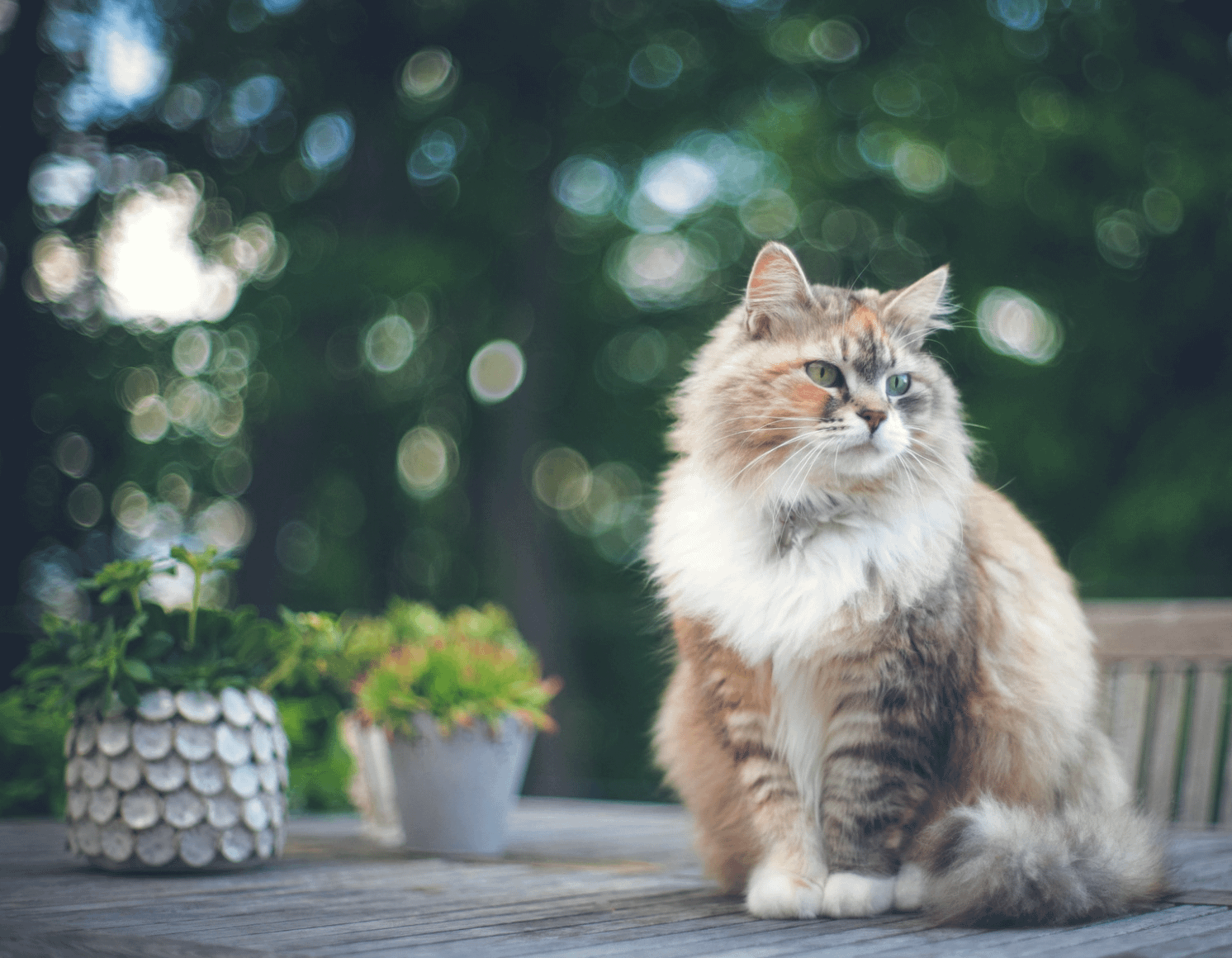
Some believe the grand Siberian cat is mother to all long-haired cat breeds. The Siberian’s coat is long, thick, and protective—a longstanding trait that can be attributed to the subarctic climate of their homeland in Russia. References to Siberians date back at least 1,000 years; however, they weren’t exported until after the Cold War.
This long-haired cat breed sports a coat composed of three layers called a triple coat: There’s an outer coat made of guard hairs, a middle layer consisting of awn hairs, and a soft undercoat. In warmer weather, the Siberian cat will shed most of their layers. In the wintertime, the coat will be extremely full. Light, regular groomings best suit this breed.
Siberians aren’t just fluffy cats, they also boast a big personality. Siberians are affectionate, playful, and highly intelligent.
Himalayan
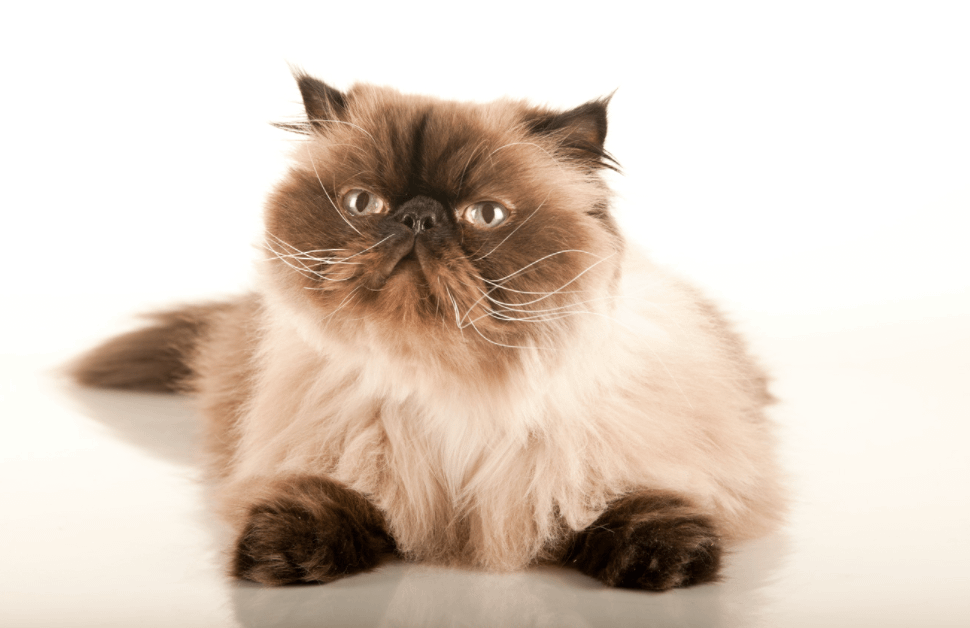
The Himalayan cat has a famous look among long-haired cat breeds as a cross between a Siamese and a Persian. This sweet, docile cat doesn't have much energy to spare, making them a good candidate for a serene home with little to no change.
Himalayans love to be petted and enjoy cuddling, but their shedding level requires that they be brushed quite often. Their long, silky fur, which includes a dense undercoat, will mat and tangle if not regularly groomed with a wide-toothed comb. Luckily, Himalayans love being groomed by their family members—this makes for a wonderful daily bonding experience!
Balinese
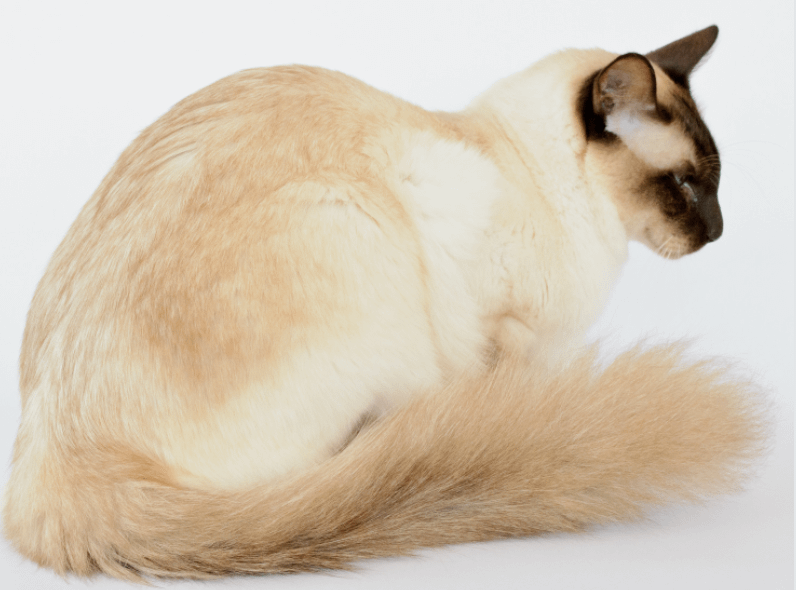
The graceful Balinese cat is the long-haired version of the Siamese. Their colorpoint fur is fine and silky, with a tendency to wave where it is longest, and their eyes are a beautiful sapphire blue. They are vocal cats that will follow you around, demanding your complete attention and conversational abilities.
Balinese cats are relatively low maintenance when it comes to their care. While definitely fluffy cats, they don’t require too much grooming because they have no undercoat and don’t shed as much. Their coats can display various point colors, including lilac point, chocolate point, seal point, and blue point.
Turkish Angora
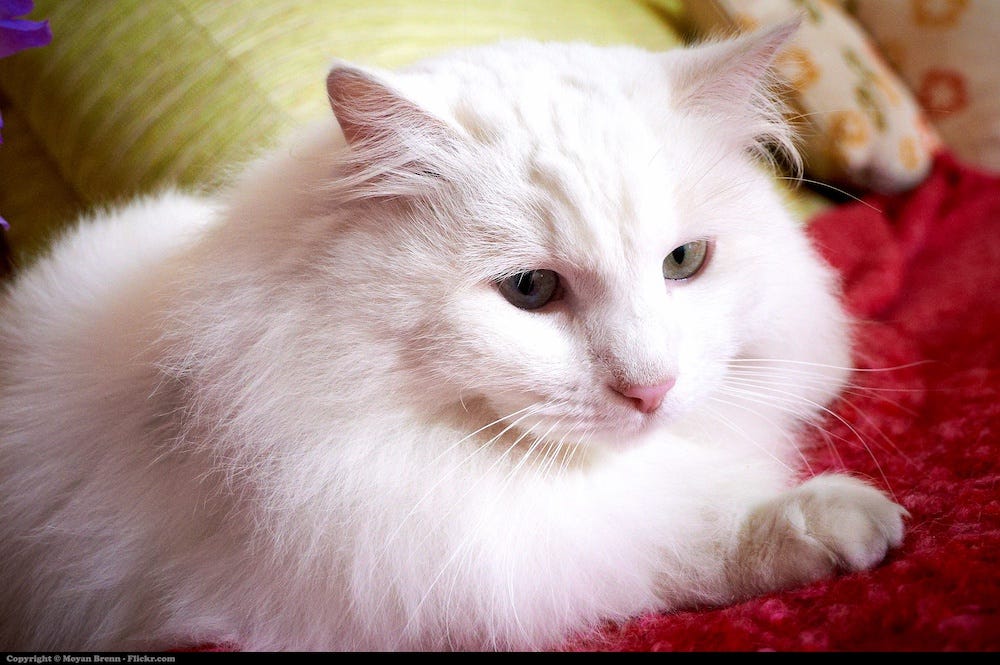
The Turkish Angora cat is known for their beautiful looks (favored by Bond villains everywhere). This long-haired cat arrived in Europe in the 16th century from Persia and Russia, but the history of this breed extends much further back. This majestic long-haired cat breed is also friendly and affectionate.
While Turkish Angoras are associated with a white coat, they actually come in a variety of colors. Because their fur is semi-long and fine with no undercoat, it’s less susceptible to matting. Brushing their coats once or twice a week can prevent much shedding and tangling.
Birman
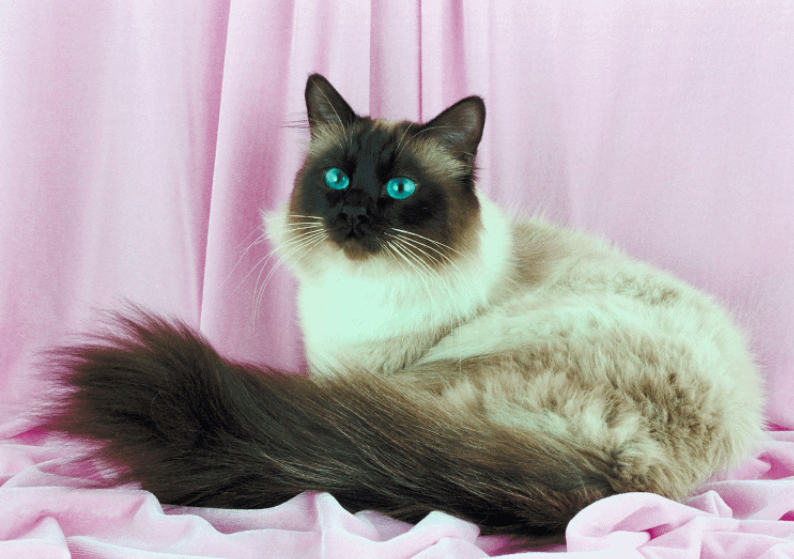
The Birman cat has a distinct look with a long and silky colorpoint coat, cute white feet, and striking blue eyes. Legends surround the “Sacred Cat of Burma,” including being companions of temple priests in northern Burma (present-day Myanmar). This loving, docile breed originated when Siamese cats mixed with white long-haired cats.
The Birman’s silky coat is medium to long in length, but doesn’t mat easily. For this long-haired cat, grooming once or twice a week will help to remove loose fur and debris. Birmans display 4 main colorpoint coat patterns: seal point, blue point, chocolate point, and lilac point.
Ragamuffin
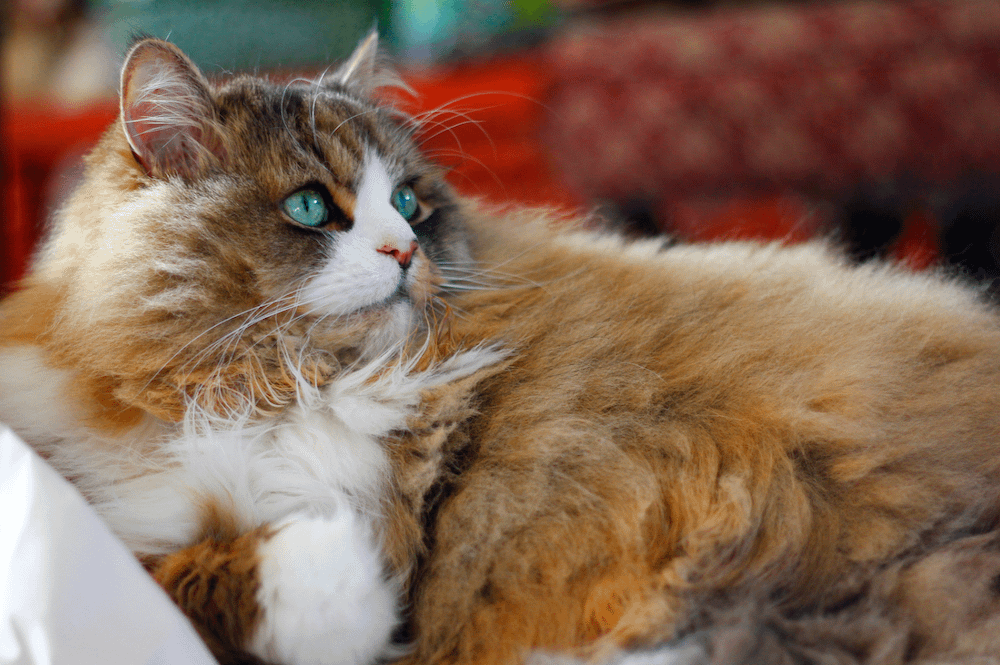
The Ragamuffin cat is very similar to their cousin, the Ragdoll, except they come in more colors and patterns. And like the Ragdoll, they are a low-maintenance cat breed—even when it comes to their luxurious long coat, which does not easily mat or clump. They have a docile nature and love to be held like a baby.
How do you tell the difference between a Ragdoll and a Ragamuffin? While a Ragdoll only displays a pointed pattern, Ragamuffins can be tabby, tortoiseshell, calico, solid coloring, tuxedo (or bicolor), and even shaded or smoky.
Somali
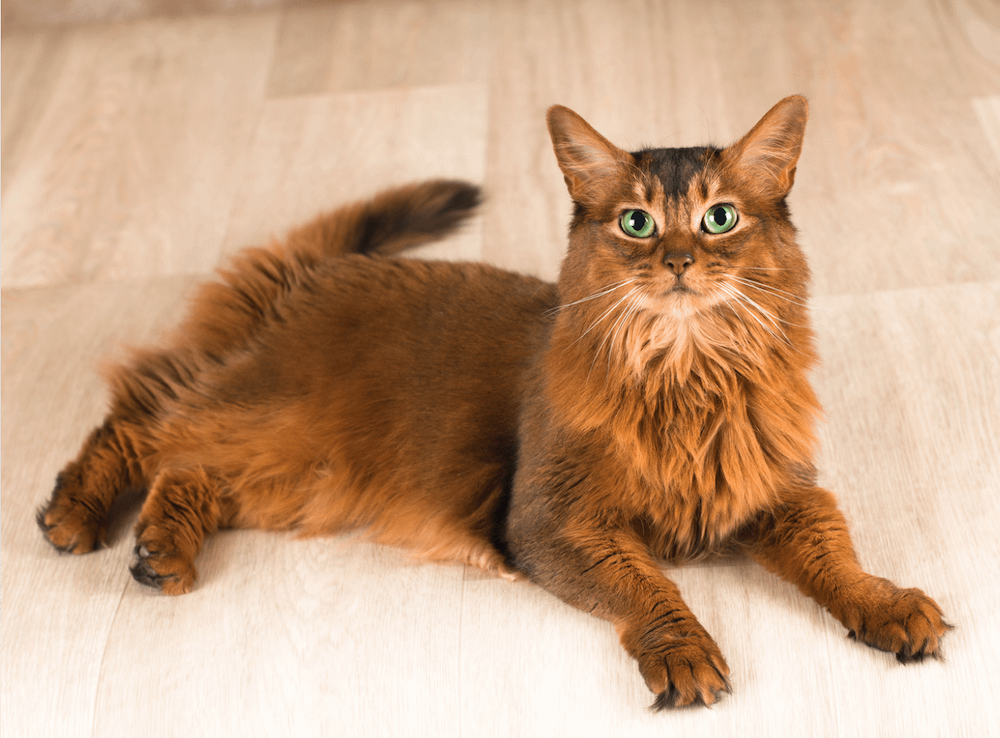
The breathtaking Somali cat is the long-haired version of the Abyssinian. They look like a small wild fox with their bushy tail, tufted ears, and shaggy-ticked coat. As the name suggests, they were once thought to have originated in Somalia. New evidence shows they are more likely from parts of Southeast Asia.
Somali cats have silky and fine fur that needs frequent grooming (at least twice weekly) to keep from tangling and knotting. These long-haired cats are outgoing, adventurous, and entertaining—you might even call them cunning, as their fox-like appearance suggests!
Nebelung
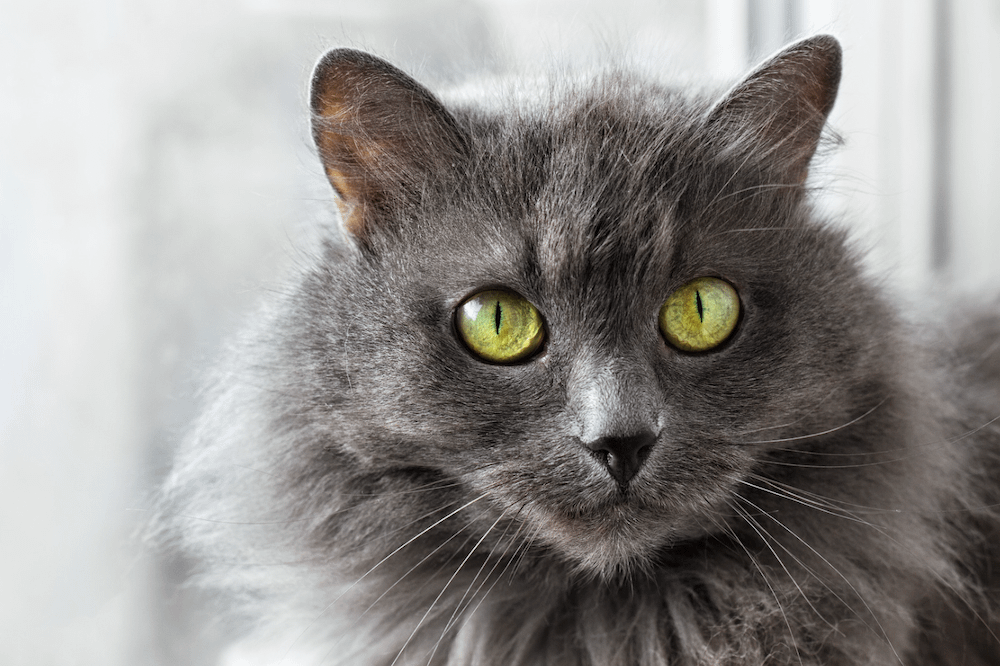
The shy, gentle Nebelung cat looks like a long-haired version of the Russian Blue. Their silky blue coat shimmers with silver at the tips and their thick-plumed tail sweeps behind them gracefully. This breed originated when a Russian Blue mated with a black Domestic Shorthair, surprisingly resulting in a long-haired blue kitten.
With fine semi-long hair and a soft undercoat, the Nebelung needs grooming at least weekly to cut down on shedding. This breed is loyal and tends to bond with a select few family members—which makes grooming sessions an ideal time for bonding.
Selkirk Rex
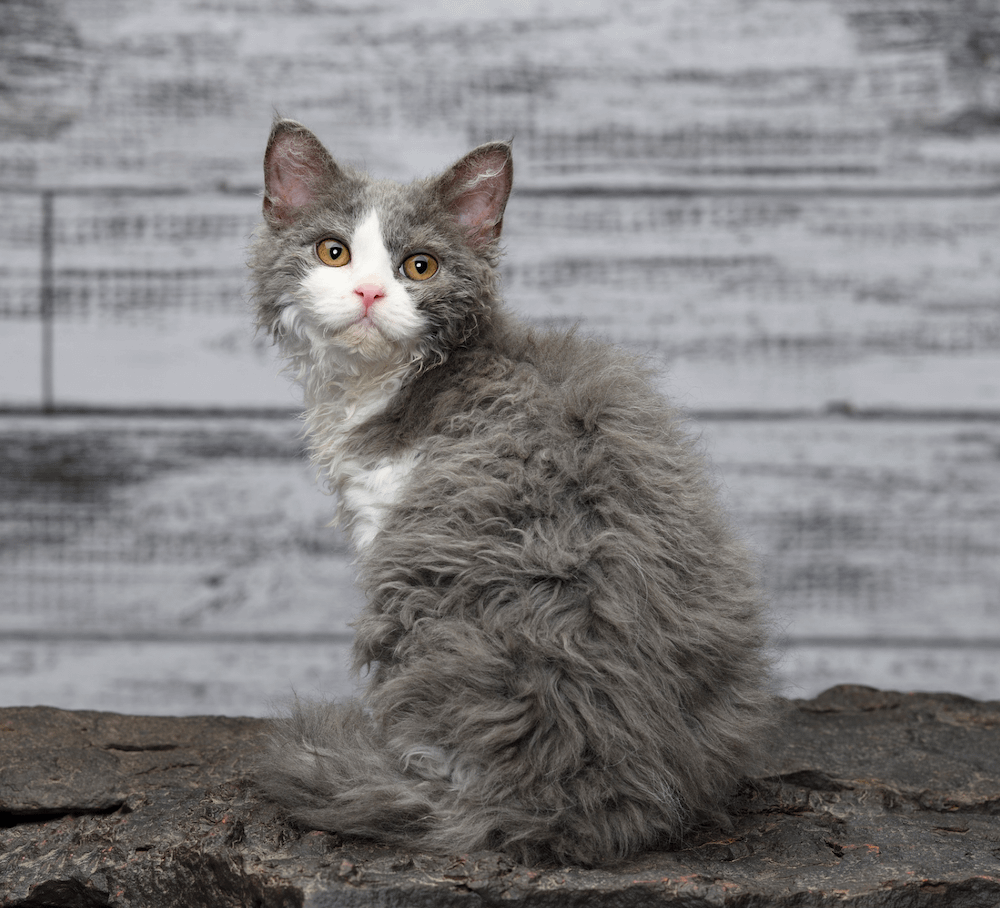
Although the Selkirk Rex can have coats of varying lengths, we find them especially adorable in their wooly-sheep state. As one of the newest breeds, this naturally curly-coated cat originated from a Montana housecat. They are sometimes outcrossed to Persians, Exotic Shorthairs, and British Shorthairs, giving them a sweet, round-eyed expression.
This fluffy cat breed needs little grooming from their human companions and sheds minimally. Selkirk Rex kittens sometimes lose their curls in the first months after birth. But at 8 to 10 months old, their curls return and increase in curliness until 2 years of age.
Turkish Van
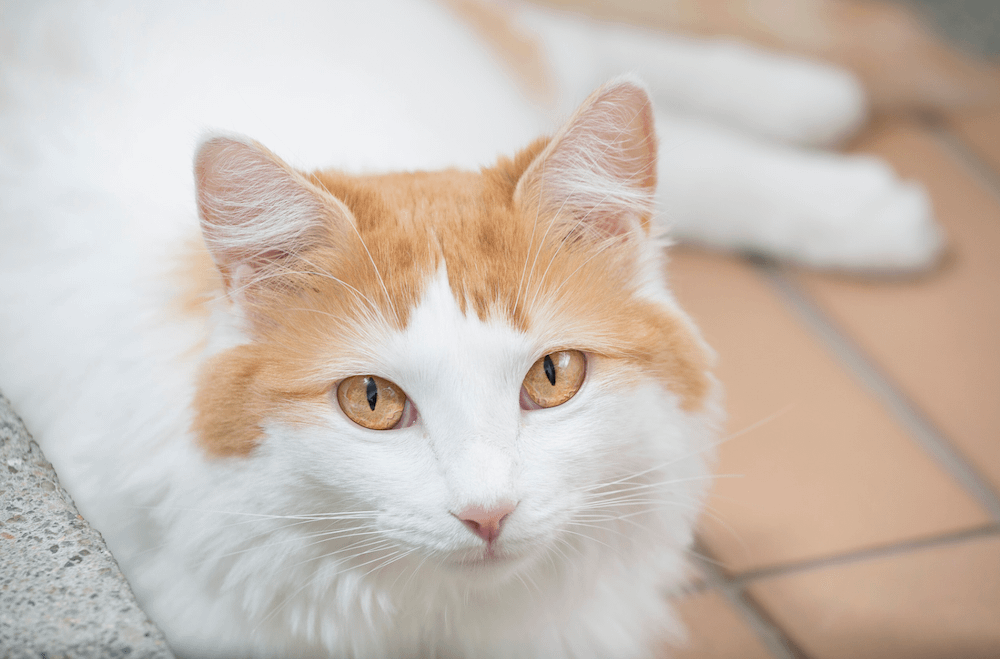
Cousin to the Turkish Angora, the Turkish Van is another ancient long-haired cat breed known for their beauty and agility. Their semi-long coat protects them from the harsh mountainous climate where they originated and aids in their love of water. In fact, the Turkish Van is known as the “Swimming Cat,” and takes their name from Lake Van in southeastern Turkey.
How do you tell the difference between the Turkish Angora and Turkish Van? The Turkish Van is typically a fairly large cat and is instantly recognizable for the colored patches on their head and tail.
Out of all the luxurious coats belonging to these long-haired cat breeds, which do you want to run your fingers through the most? We recommend taking a walk around your local cat shelter to check out all the long-haired beauties in need of a home!
Don't forget to check out our guide on adopting a cat so you're prepared before bringing home a long haired feline!
Photo credits:
- Domestic Longhair: Madalyn Cox via Unsplash
- Persian: Maxim Mushnikov via Unsplash
- Turkish Angora: © Moyan Brenn / Wikimedia Commons / CC-BY-SA-2.0
